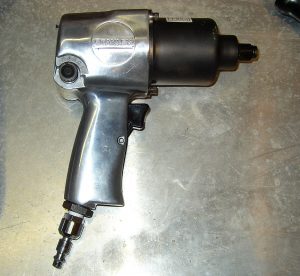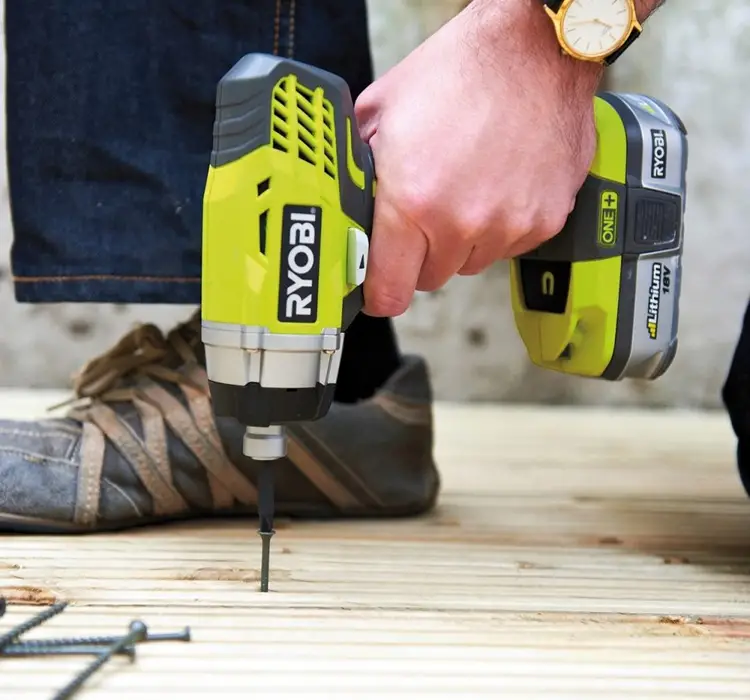Table of Contents
Having a varied tool kit with a device to tackle every problem is essential for both the home DIY enthusiast and someone who works on a more professional level.
But with so many different tools available, it isn’t difficult for things to become confusing, quickly.
An impact driver is a great addition to your tool kit, but many people may wonder what its main uses are and in this article, we are going to be looking at the various uses and how it differs from other similar tools.
What Is An Impact Driver?
Before we begin to explore its uses, it is important to fully understand what an impact driver is.
In short, this is a tool that is similar in appearance to a drill and serves a similar purpose.

Impact drivers are used to drive in long screws and bolts, notably lag bolts and carriage bolts as well as deck screws.
Impact drivers make use of bits which are slotted into the chuck with a ¼ inch hex fitting, as opposed to the more common twisting bit that we see with other tools.
These tools have very high torque and therefore deliver much more force and pressure than their drill counterparts.
For this reason, their use is quite different.
The Main Uses Of An Impact Driver
Impact drivers are diverse tools that can be used for a variety of different tasks. If you are looking for something that will make light work of tougher screw driving jobs, then an impact driver should be your go-to.
Some of the most common uses of an impact driver include:
- Driving in larger quantities of screws.
- Driving large screws, lag bolts and fasteners.
- Some basic drilling jobs – but it is essential to remember that a drill is a better option for this.
- Tasks that require more torque than a drill can offer.
Comparisons with similar tools
Impact Driver vs Drill
One of the first major considerations when it comes to choosing between an impact driver and a drill is the length of time you intend on using the tool.
Thanks to their design and ability to provide a better downward force, impact drivers are better for long term use. For this reason, many people opt to use them when driving in multiple screws and fasteners.
In contrast, for drilling holes, a drill is always going to be the best option. That being said, an impact driver can be used for some basic drilling jobs, but since the two have been designed for different tasks, you will always get more precision when using a drill.
However, if the material through which you are drilling is much thicker than usual, the high torque of the impact driver may be advantageous.
Unlike the drill, which can often be a bulky tool, impact drivers are more compact and lightweight, further adding to their superiority where longer tasks are being completed.
When it comes to choosing whether to use an impact driver or drill, you should consider:
- The type of screws you will be driving.
- The thickness of the material
- How much torque is required.
Impact Driver vs Hammer Drill
A hammer drill, as its name may suggest, provides a hammering motion – this is delivered directly to the bit and works well on tougher materials such as in masonry work.
That being said, more often than not, these drills can be used in the same way as a regular drill by turning off the hammering motion.
It is always better to opt for a hammer drill if you are drilling more rigid material or if you are not sure of the density of the material. For example, when drilling through a wall that potentially has stone or concrete behind it.
Impact Driver vs Combi Drill
A combi drill is essentially a drill that has a hammer function that can be switched on and off. As such, this type of drill can perform a vast variety of tasks. One of the most versatile tools in any handyman’s kit, it is not surprising that a lot of people opt for this over everything else.
That being said, when it comes to the impact driver vs combi drill, it pays to know what is the better option.
A combi drill will work best on more dense materials such as stone, whereas an impact driver can only be used for metal, wood and the like.
The combi drill will also feature a diamond-tipped stone bit that is specifically designed to tackle these harder materials.
In short, it pays to have both options in your tool arsenal for when the moment calls for it.
Impact Driver vs Impact Wrench

An impact driver is ideal for jobs where screws and other fastenings need to be drilled into something.
In contrast, an impact wrench can be used to tighten nuts and bolts – as well as to loosen them again, of course. When it comes to an impact driver vs and impact wrench, your choice is quite clear – the type of fastening you are using will determine the right tool for the job.
In the main, an impact wrench will be used by mechanics in the repair and maintenance of cars and other vehicles, whereas the impact driver is preferred by those working in a household or commercial setting for DIY tasks.
However, the differences between the two do not end there. We mentioned earlier that impact drivers make use of ¼ inch hex fittings, whereas the impact wrench uses a ½ inch square drive.
Whilst an impact driver is a more powerful alternative to the drill, an impact wrench goes even further and is more powerful than the impact driver.
Once again, choosing the right tool is essential. The type of job you are doing and the power that is required will help you to make this decision.
Impact Driver For Wheel Nuts
A wheel nut is a type of lug nut and removing them or installing them does require a particular kind of tool, if you want to get the job done correctly. Many people wonder whether you can use an impact driver for wheel nuts, and in short, you can.
However, in order to be able to do this, the nuts must not be tightened beyond the torque of the tool that you are using. In other words, if the nuts are tightened to 100lb per foot, the output torque of the impact driver must be greater than this to have an effect.
Furthermore, if there is any sign of rust or frost on the nuts, it is highly unlikely that an impact driver will have the power necessary to remove these.
Essentially, an impact wrench is always going to be a better tool for working on wheel nuts. Many lug nuts will be tightened to a much greater degree than the recommended 100lb per foot, and thanks to the 220lb per foot power of the impact wrench, you can be sure that it will be up for the challenge.
Conclusion
Impact drivers are smaller than drills yet are often confused with these familiar tools. Whilst they may look similar, the tasks that an impact driver can comfortably complete are slightly different, and this is true whether we are talking about a regular drill or a hammer drill.
When you are faced with the choice of an impact driver vs drill, it can be difficult to know what to do. The best way to make the decision is to look at the material you will be drilling into, and the type of screws you will be using.
Additionally, you may find that there is some confusion around the right choice when it comes to an impact driver vs impact wrench. For the most part, impact wrenches work better on lug nuts, such as those used on car wheels.


